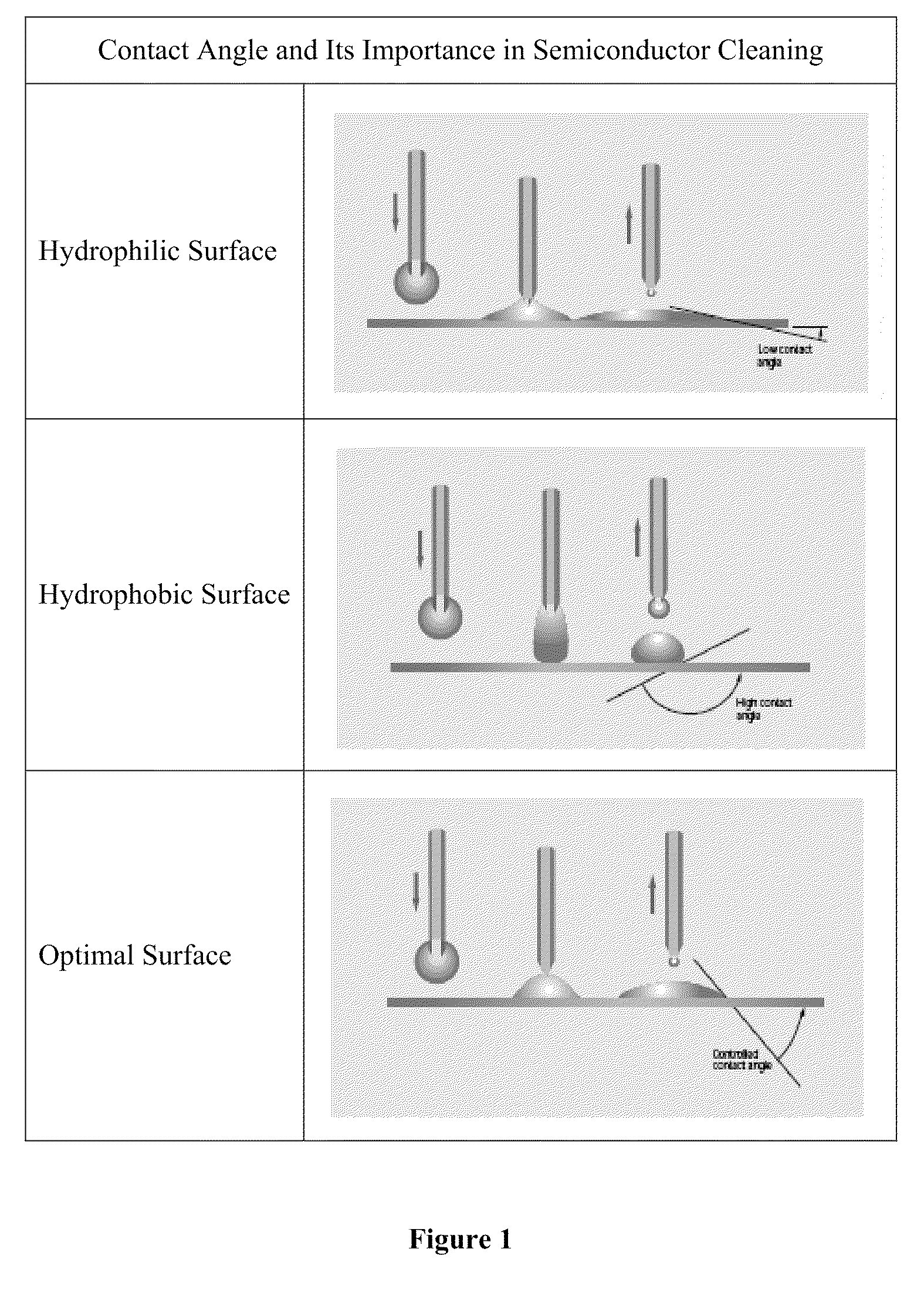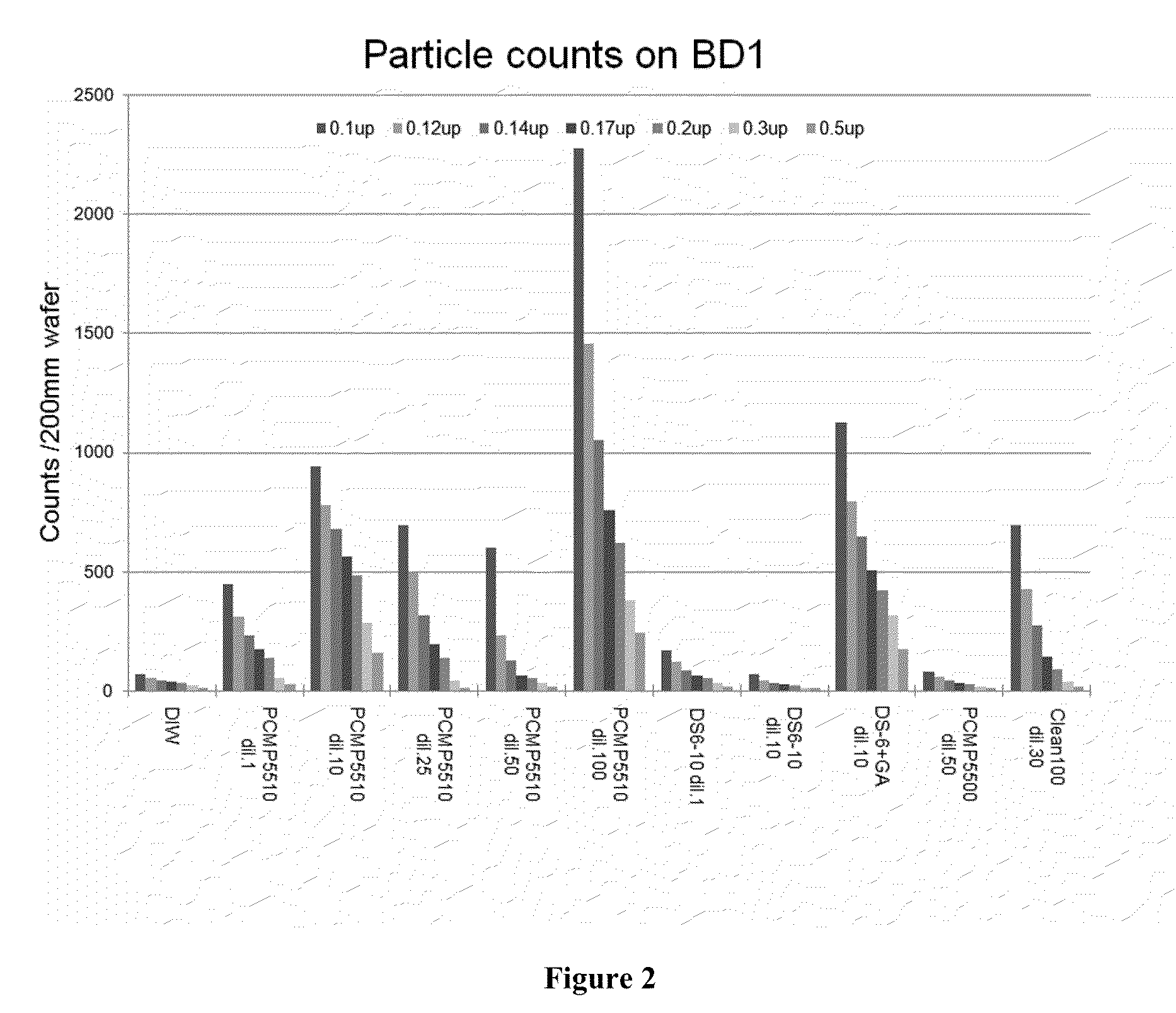Composition comprising chelating agents containing amidoxime compounds
a technology of amidoxime and compound, which is applied in the field of composition comprising amidoxime compound, can solve the problems of ruthenium or molybdenum, difficult removal of unreacted metal, and difficult effective removal, so as to achieve the effect of providing for the chelation of metal ions residues
- Summary
- Abstract
- Description
- Claims
- Application Information
AI Technical Summary
Benefits of technology
Problems solved by technology
Method used
Image
Examples
example of embodiments
of the Present Invention
[0315]In an exemplary embodiment, the compositions comprising an amidoxime compound are further diluted with water prior to removing residue from a substrate, such as during integrated circuit fabrication. In a particular embodiment, the dilution factor is from about 10 to about 500.
example 1
[0316]The patents and publications referred to in the specification are hereby incorporated by reference in their entireties. An exemplary embodiment involves a method for removing organometallic and organosilicate residues remaining after a dry etch process from semiconductor substrates. The substrate is exposed to a conditioning solution of phosphoric acid, hydrofluoric acid, and a carboxylic acid, such as acetic acid, which removes the remaining dry etch residues while minimizing removal of material from desired substrate features. The approximate proportions of the conditioning solution are typically 80 to 95 percent by weight amidoxime compound and acetic acid, 1 to 15 percent by weight phosphoric acid, and 0.01 to 5.0 percent by weight hydrofluoric acid. See, U.S. Pat. No. 7,261,835.
[0317]Another exemplary embodiment includes from about 0.5% to about 24% by weight of complexing agents with amidoxime functional groups with an aqueous semiconductor cleaning solution having a pH ...
example 2
[0318]Table 1 lists other exemplary embodiments of the present invention where the formulations additionally include from about 0.5% to about 24% by weight of compounds with amidoxime functional groups in aqueous semiconductor cleaning solutions. Such formulations may contain additional components consistent with this application such as surfactants, alkaline components, and organic solvents.
TABLE 1Exemplary Formulations with Chelating Agents for Usewith Amidoxime CompoundsH3PO4 (wt %)Other Acidwt %2methanesulfonic1.472pyrophosphoric acid (PPA)3.02Fluorosicilic0.242Oxalic2.04Oxalic2.06Glycolic1.03Oxalic2.03Lactic2.04Lactic2.03Citric2.04Citric2.03PPA0.53Glycolic2.06Glycolic2.03PPA2.03PPA4.0
PUM
 Login to View More
Login to View More Abstract
Description
Claims
Application Information
 Login to View More
Login to View More - Generate Ideas
- Intellectual Property
- Life Sciences
- Materials
- Tech Scout
- Unparalleled Data Quality
- Higher Quality Content
- 60% Fewer Hallucinations
Browse by: Latest US Patents, China's latest patents, Technical Efficacy Thesaurus, Application Domain, Technology Topic, Popular Technical Reports.
© 2025 PatSnap. All rights reserved.Legal|Privacy policy|Modern Slavery Act Transparency Statement|Sitemap|About US| Contact US: help@patsnap.com



